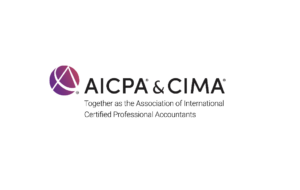Organisations are under pressure to become more innovative and adaptable, says Obsidian's Muggie van Staden.
Open standards and the financial services market are not two concepts that many believe go together. And yet, the shift towards open innovation is permeating all sectors of the market as organisations are under pressure to become more innovative and adaptable to change.
Chalk it up, at least in part, to the meteoric rise of insurtechs, fintechs, and any other ‘techs’ doing the rounds. Consumers want agile service providers capable of meeting their unique requirements. This means customisation, personalisation, and better value at affordable rates have become the order of the day. To this end, the concept of open innovation has picked up significant momentum. It can be defined as promoting a mindset geared towards innovation that runs counter to the secrecy and silo mentality of traditional corporate businesses.
But given the nature of the data financial services providers have access to, marrying their innovation needs with legislative requirements is no easy task. Local banks, like their international brethren, are not immune to these market forces (and pressures). However, at an operating system level (think desktops, laptops, and so on), banks have already embraced open standards. And when it comes to container open source software development platforms, all banks have some sort of strategy in place to drive this concept throughout their operations.
Already, the Big Four run Hadoop-based platforms (a collection of open source software utilities that focus on data and computational resources). Of course, this does not mean proprietary systems like Oracle and SAP are a thing of the past. These solutions are still very much a key driver at the back-end of banking systems. So, despite the push towards open standards, there are no real open source alternatives to work at the scale required for banks at the back-end level. Even today, there are several pockets in operations where there are no open alternatives to proprietary solutions.
Going open
Irrespective, there is a shift happening where financial service providers are moving away from closed standards to open ones. This is not to be confused with open source as such. Open source refers to software where the source code is freely available to users to modify. Open standards are specifications used to develop software along the guidelines to keep technology ‘open’. This allows for the free sharing of all data types with perfect fidelity.
In theory, going the open standards route make the cost-savings element for any organisation that much easier. The focus is therefore on cross-platform support using open standards. In this way, the client, i.e. the bank, can choose the system best suited for their requirements and are not locked into any specific vendor dictating their business strategy. For financial services providers, given the data concerns mentioned, this is proving to be a boon as they are not forced to change their environment to suit vendor solutions.
Many local and international banks have gone the open route on several projects. GitHub, one of the world’s largest software development platforms has numerous examples of projects done on an open source (and open standards) basis. Financial institutions are using such initiatives as more effective ways of transitioning from proprietary environments to more open ones.
Changing models
It must also be remembered that before cloud computing made pay-as-you-go mainstream, open source was the first to use a subscription model. This provides significant impetus for the CFO to migrate from a traditional (and expensive) capex model to a more affordable (and flexible) opex one.
Moving to the cloud has certainly made this an easier discussion to have. Increasingly, IT spend is going the opex route and things like hosted environments and open standards can greatly contribute to this. Certainly, at a boardroom level, these opex discussions have become more commonplace as the CFOs start advocating a relook at how innovation is funded.









